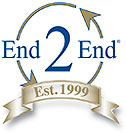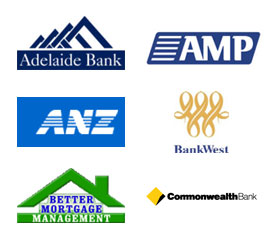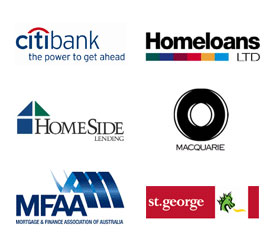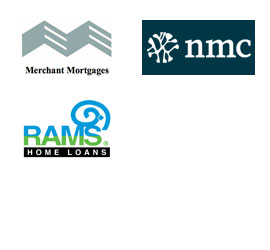Standard Variable Loan
This is the most popular home loan in the country. The interest rate on this style of loan can vary at anytime depending on market movements. The features of a Standard Variable rate mortgage will vary dependant on the individual institution but these loans generally can offer an offset facility, ability to redraw, no limits on additional payments and in most cases minimum early pay-out penalties. Standard variable mortgages can often be combined (or split) with other types of loans and are ideal for the borrower who is looking to pay their debt off sooner rather than later.
Basic Variable Loan
Basic variable rate mortgages can sometimes be referred to as the ‘no frills’ version of the standard variable rate style of mortgage. The interest rate is often less then a standard variable mortgage, making them attractive to budget conscious borrowers seeking a lower variable rate but with fewer features.
Introductory (AKA: Honeymoon)
An Introductory or “Honeymoon” variable rate mortgage generally offer’s a guaranteed low rate for an initial length of time (usually 6-12 months) after which most the interest rate will revert up to the Standard Variable Interest Rate. Introductory mortgages are attractive for borrowers looking to take advantage of a discounted “honeymoon” period before taking up applicable features and benefits of a Standard Variable Rate Mortgage.
Fixed Rate Mortgage
Fixed rate mortgages are funds lent over a specific set term at a set interest rate. This provides the borrower with the benefit of knowing precisely what their monthly mortgage commitments will be should their circumstances change. Some institutions may impose a penalty if you make lump sum reductions to your mortgage facility or you pay the loan out in full. However, fixed rate facilities are ideal in a rising rate market as this guarantees your interest rate and mortgage commitments for the given fixed interest timeframe.
Bridging Finance
Bridging finance is available to borrowers who are looking to purchase new property now and sell your current property later. This style of funding can be particularly helpful to ‘bridge’ the gap between the “buying & selling” timeframe. The interest rate on Bridging Mortgages is usually quite similar to a Standard Variable Rate facility. Bridging finance can ensure that the borrower doesn’t miss out on a desired piece of real estate because they haven’t yet sold the current home.
Line of Credit
A Line of Credit can provide the borrower with the benefit of accessing the equity in their own home or investment properties at any time for any worthwhile purpose. A Line of credit has similarities to an overdraft facility in that available funds can be withdrawn from the facility back up to the original approved limit at anytime. Interest rates on Line of Credit facilities are usually variable that fluctuates within the market. The borrower can generally access the available funds in their Line of Credit account via a Credit Card, Cheque Book, ATM, Internet or Phone Banking. A Line of Credit facility provides the borrower with easy access their equity ensuring peace of mind in times of need.
Credit-Impaired Facilities
At some point in the past, a borrower may have has some difficulty in fulfilling their financial commitments due to either lack of income, unexpected business losses, illness or had a difference of opinion with a prior credit provider. Unfortunately, in these cases the prior credit provider could have well lodged a payment default (AKA: Black Mark) on the borrowers credit report. When such a borrower applies for finance, a Black Mark lodged on a credit report may cause some frustration as the incoming institution looking to lend the borrower money may not take an understanding view of the borrower’s explanation for why the default exists.
Credit-Impaired Facilities are designed specifically to assist borrowers in these particular circumstances. Often these loans incur a higher interest rate and possibly extra fees and charges.
Low Document Loans
A Low Documentation (or No documentation) mortgage is designed for self-employed or small company applicants whose financial statements may not be available for a variety of different reasons (e.g. Accountant hasn’t completed their tax returns). In most circumstances, the borrower must have a sizeable deposit or equity in existing real estate to access this style of funding.
These mortgage products are usually come with a variable interest rate (some lenders will provide fixed rate options) and offer most of the features attached to the given institution’s standard variable rate loan facility. A Low document mortgage can be equally as competitive as traditional funding, however they provide less hassle to the applicant as they aren’t required to provide the usual income paperwork for credit assessment.
Interest Only Facilities
An Interest Only Mortgages are usually available on Investment Loans. Interest is calculated on the original amount borrowed and has no principle reduction component in the mortgage repayment. The ideal applicant is an Investor looking to maximize their tax position & negative gearing benefits by just paying the interest on the mortgage.
Split Loans
A split facility is ideal for an applicant who is looking to have 2 or greater loan products rather than just one. An example is an applicant who wishes to take advantage of a fixed interest rate product in combination with a line of credit product. The borrower can fix a portion of their overall mortgage to provide stability of interest rate and repayment but still allowing the flexibility to have access to available equity in a line of credit component of the facility.







